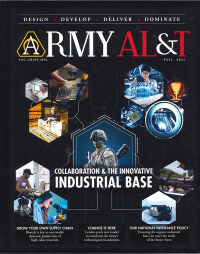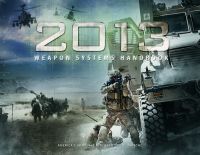To purchase an eBook from the Apple iBookstore, you must first have downloaded iTunes to your device and set up an account. Launch iTunes, go to the Store, click on Books, then type in the ISBN in the Search Store box.

ISBN
This monograph discusses reform initiatives from 1960 to 2009 and concludes with prescriptions for future changes to the acquisition culture of the services, Defense Department, and industry. The acquisition process has a number of built-in, even cultural, aspects that resist change.
These include a workforce that too often has with insufficient training, experience, and stable tenure to monitor and manage huge defense acquisition programs; the short tenure of senior politically-appointed acquisition officials, averaging a mere eighteen months in office; an irregular and erratic flow of weapons systems appropriations; the very nature of cutting-edge, highly risky research and development; an ill-informed requirements process that virtually mandates changes to contracts as requirements are added or changed; and the many financial incentives that reward lowball contractor bids and provide negative sanctions for failing to spend all allocated funds. These cultural challenges within the current acquisition system have great value to many key participants in industry, the services, and Congress and predispose them to be generally resistant to change.
In general, the defense budget is described in various ways. The term total obligational authority refers to the value of the congressionally approved defense programs for each fiscal year, regardless of the financing method (which could include balances available from prior years, other resources available from prior years, or resources available from the sale of items in inventory). The term budget authority, on the other hand, refers to the value of annual new authority to incur obligations. Outlays refer to expenditures or checks issued. Defense outlays are often presented in terms of either a percentage of the gross domestic product (GDP) or of total federal outlays.
This monograph includes past studies and reports on the defense acquisition program across Federal Government entities for review and analysis.
ABOUT THE AUTHOR
J. Ronald Fox is a member of the Harvard Business School faculty where he chaired the General Management Area. His research deals with the management of large engineering and construction projects and defense acquisition. He taught courses in project management, competition and strategy, defense and aerospace marketing, and business-government relations. He holds a bachelor of science in physics, cum laude, from Le Moyne College, and a master of business administration and Ph.D. from Harvard University.
Fox served as assistant secretary of the Army in which he was responsible for Army procurement, contracting, and logistics. Prior to his appointment as assistant secretary, he served as deputy assistant secretary of the Air Force. His work in these governmental positions earned him the Exceptional Civilian Service Award from the Air Force and the Distinguished Civilian Service Award,the highest decoration for public service awarded by the Department of the Army. He chaired the Board of Visitors of the Defense Acquisition University, was trustee of the Logistics Management Institute and the Aerospace Corporation, and was director of the American Society for Macro Engineering. In 2004, he was named senior adviser on acquisitions to the Defense Acquisition History Project. In 2006, he was named to the Defense Acquisition University Hall of Fame. He is the author of several books, including Arming America: How the U.S. Buys Weapons (1974); Managing Business-Government Relations (1982); The Defense Management Challenge: Weapons Acquisition (1988); Critical Issues in the Defense Acquisition Culture (1994); and Challenges in Managing Large Projects (2006).
Related items:
Army AL&T: Professional Publication of the AL&T Community can be found here: https://bookstore.gpo.gov/products/sku/708-074-00000-4
Army Sustainability: Professional Bulletin of United States Army Logistics can be found here: https://bookstore.gpo.gov/products/sku/708-012-00000-9?ctid=103
The Military Logistics, Engineering & Technology collection of publications can be found here: https://bookstore.gpo.gov/catalog/security-defense-law-enforcement/milit...
Table of Contents:
Foreword ............................................ vii
Principal Author ...................................... ix
Preface.............................................. xi
Chapter
1. The Defense Acquisition Process .................. 1
The U.S. Defense Establishment .................... 1
Major Weapon Systems ........................... 5
Defense Acquisition Historical Perspective............ 7
Defense Acquisition Versus Commercial Operation..... 12
Government Acquisition Regulations ................ 13
Participants in Defense Acquisition ................. 14
Defining New Defense Systems ..................... 15
Congressional Authorization and Appropriation ....... 19
Stages in the Acquisition Process ................... 20
The Transition Between Phases .................... 28
Selecting a Contractor ............................ 29
Controlling Schedules and Costs ................... 30
The Basis for Profits ............................. 31
Limited Rates of Production ....................... 32
Limitations of Government Program Managers ....... 33
2. Defense Acquisition Reforms in the 1960s and 1970s... 35
Acquisition Reform During the 1960s—The McNamara
Innovations .................................. 35
The Transition from Robert McNamara to Melvin Laird .. 40
Deputy Secretary of Defense David Packard ............ 43
Secretary Laird Creates the Blue Ribbon Defense
Panel (1969) ..................................... 45
Defense Systems Acquisition Review Council ........... 47
Industry Advisory Council ........................... 49
Packard Confronting Resistance ...................... 53
Pushing Against Inertia ............................. 58
The Blue Ribbon Defense Panel Issues Its Report (1970) .. 62
Consolidating Gains ................................ 69
Codifying the New Acquisition Process—DoD
Directive 5000.1 .................................. 73
Leadership in the Post-Packard Era ................. 79
The Congressional Commission on Government
Procurement .................................. 82
Office of Federal Procurement Policy ................ 84
Procurement of Research and Development .......... 88
Reforming Requirements ......................... 91
Legislating Reform .............................. 93
Office of Management and Budget Circular A–109 ..... 95
3. The 1980s: The Carlucci Initiatives and the
Packard Commission ........................... 97
Setting the Stage: PPBS and the Cycles of Weapons
Acquisition Reform ............................ 100
From PPBS to the Acquisition Improvement Program .... 106
AIP in Action: Implementation and Execution ........ 115
Responding to Charges of Fraud, Waste, and
Mismanagement .............................. 120
The Packard Commission, 1985–1989 ............... 125
Under Secretary of Defense for Acquisition ........... 132
The Battle for Control of Weapons Systems
Acquisition . . . . . . . . . . . . . . . . . . . . . . . . . . . . . . . . . . . 142
The Legacy of 1980s Weapons Acquisition Reform ..... 146
1980s Retrospective .............................. 149
4. Acquisition Reform from 1990 to 2000 .............. 151
A Mandate for Change ........................... 153
Organizing the Reform Process .................... 154
Tools for Reform ................................. 158
The Broad Reach of Reform ....................... 165
Changing the Acquisition Process .................. 175
Results of 1990s Acquisition Reforms ................ 180
Views of Army Headquarters Personnel ................ 183
Views of the Army Program Management
Community .................................. 184
What Has Been Good About Acquisition Reform? ........ 185
What Has Been Bad About Acquisition Reform? ......... 185
Summary of Rand Findings .......................... 187
5. Conclusions...................................... 189
The Defense Marketplace ......................... 193
Relationships Between Government and Industry ..... 194
Reexamining the Program Manager Concept ......... 198
Differing Perceptions of Defense Acquisition .......... 200v
Government and Contractor Incentives . . . . . . . . . . . . . . . . 203
The Need for Extended Follow-up Actions .............. 205
Appendixes
A. Four Acquisition Reform Studies Conducted from
2001 to 2009 ...................................... 209
B. Changes to the Acquisition Process, DoD
Directive 5000.1, 1971 to 2008 ........................ 221
C. Carlucci Thirty-Two Acquisition Reform
Initiatives, 1983 ................................... 229
D. Rand Corporation Study of Sixty-Three
Acquisition Reform Initiatives, 2002 ................... 231
Abbreviations and Acronyms ............................ 235
Selected Bibliography.................................. 241
Index ............................................... 255
This publication discusses reform initiatives from 1960 to the present and concludes with prescriptions for future changes to the acquisition culture of the DoD and military communities. This book would appeal to the Defense and military acquisition industries, students and teachers studying military and military policy history, government contractors and members of the general public interested in the defense acquisition process, including how it impacts government contractors' long-term projects with the Department of the Defense.
Product Details
- Ronald J. Fox, David G. Allen, Thomas C. Lassman, Philip L. Shiman, U.S. Army, Center of Military History







